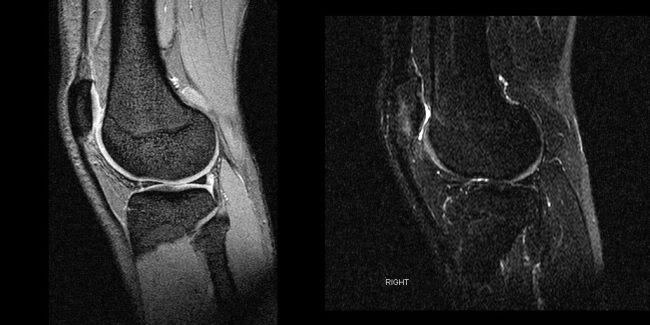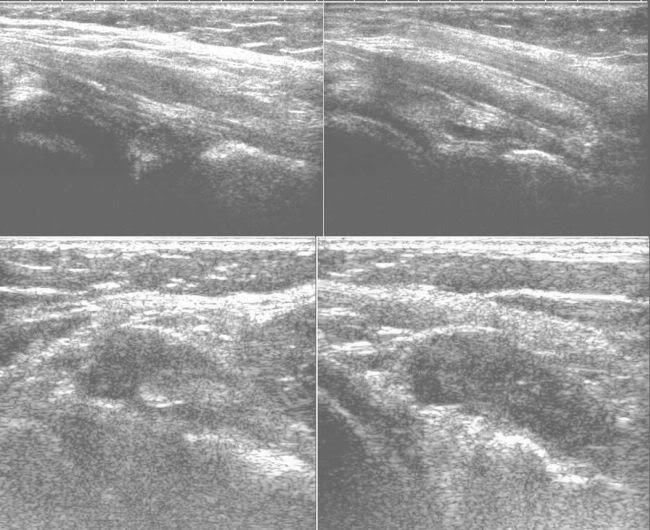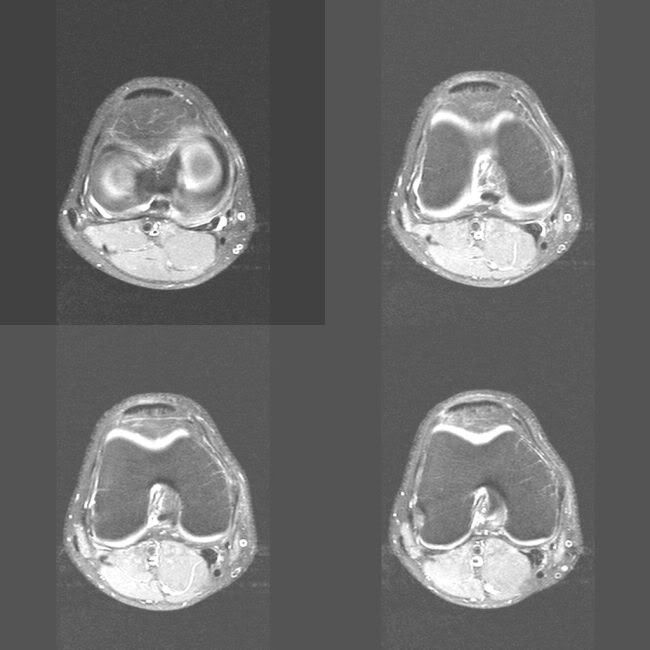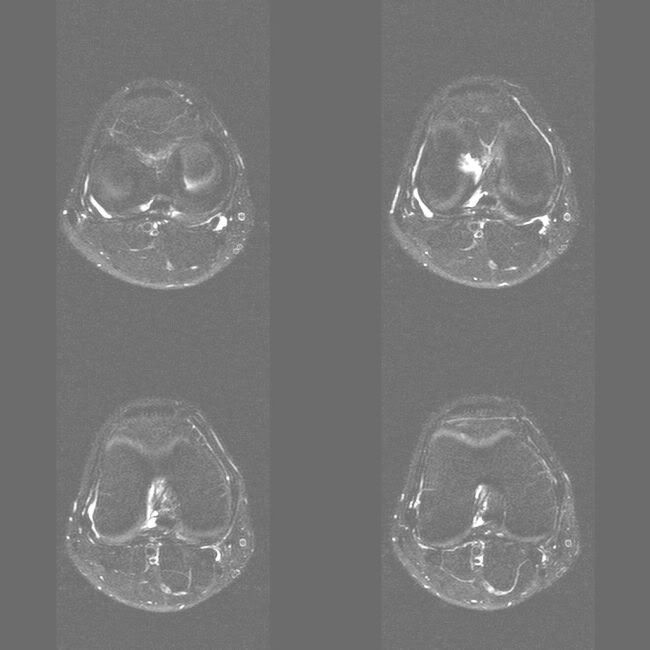28 year old young gentleman was referred from the GP as requested by the orthopod for the ultrasound of the right knee. The patient had a football injury (possibly pivot-shift) more than a year ago which was evaluated with MRI of knee. The MRI of the knee reported tear in the anterior horn of the lateral meniscal.

He underwent orthoscopy and meniscal repair. Despite the treatment, he continued to have pain on the posteromedial aspect of the knee which was worsening. Ultrasound was requested for further evaluation.
Image gallary:

Imaging findings:
ULtrasound of the posteromedial aspect of the knee showed partial tear within the semimembranosus musculotendinous junction, extending up to the insertion with fluid around the tendon.
MR image review:


Review of the axial MR images also showed partial tear within the semimembranosus tendon with fluid around it. Actaully the appearances are virtually unchanged since the previous study.
Discussion:
Semimembranosus and semitendinosus are medial hamstrings (biceps is lateral hamstring). Their action is flexion and medial rotation of knee. Semimembranosus has a tendinous origin from the ischial tuberosity, crosses deep to semitendinosus and long head of biceps as a fusiform bulk, and inserts as a tendon in a complex fashion as 5 digital expansion: 1. main arm to posteromedial tibial plateau (infraglenoid tubercle) 2. oblique popliteal ligament 3. posteromedial capsule and posterior horn of medial meniscus 4. posterior oblique ligament 5. aponeurosis of popliteus muscle. Also it attaches to the superficial fibers of the medial collateral ligament. Recently the attachment to the posterior horn of the lateral meniscus is documented
The fusiform bulk is prone for strain injury. Partial tears of the medial head of the gastrocnemius at its origin is associated with semimembranosus strain injury. Avulsion injury of the main arm of insertion results from valgus stress and is associated with tears of the ACL and posterior horn of the medial meniscus.
This is a rare case of partial tear to the semimembranosus insertion associated with anterior horn of the lateral meniscus. Semimembranosus tendon is known to attach to posterior horn of the lateral meniscus. The association between posterior horn of the lateral meniscal tear and semimembranosus insertion tear has not been documented in the literature.
References:
1. Koulouris G et al. Evaluation of the hamstring muscle complex following acute injury.Skeletal Radiol 2003 Oct;32(10):582-9. (PMID: 12942206 )
2. Alioto RJ et al. Complete rupture of the distal semimembranosus complex in a professional athlete. Clin Orthop Relat Res 1997 Mar;(336):162-5 (PMID: 9060501)
3. Ray JM et al. Semimembranosus tendinitis: an overlooked cause of medial knee pain.Am J Sports Med 1988 Jul-Aug;16(4):347-51 (PMID: 3189658)
4. Bencard JT et al. Traumatic Musculotendinous Injuries of the Knee: Diagnosis with MR Imaging. RadioGraphics 2000; 20: 103
5. Kim YC et al. Tendinous insertion of semimembranosus muscle into the lateral meniscus.Surg Radiol Anat. 1997;19(6):365-9. (PMID: 9479710)